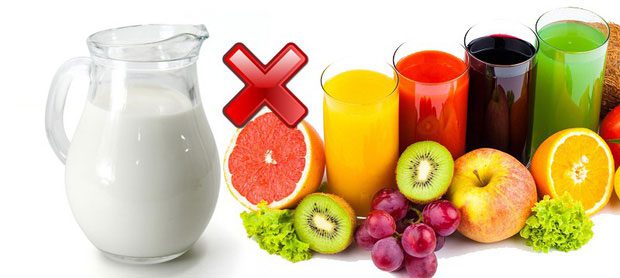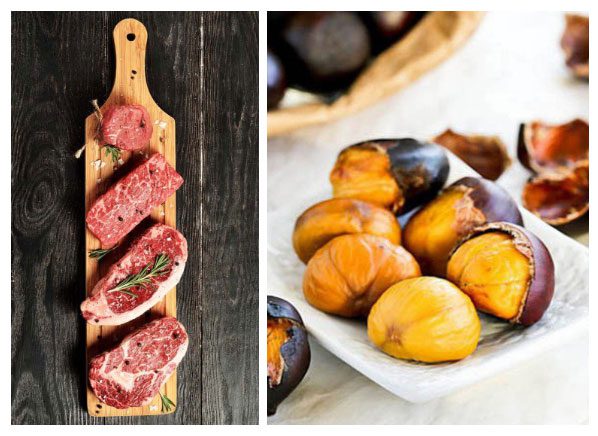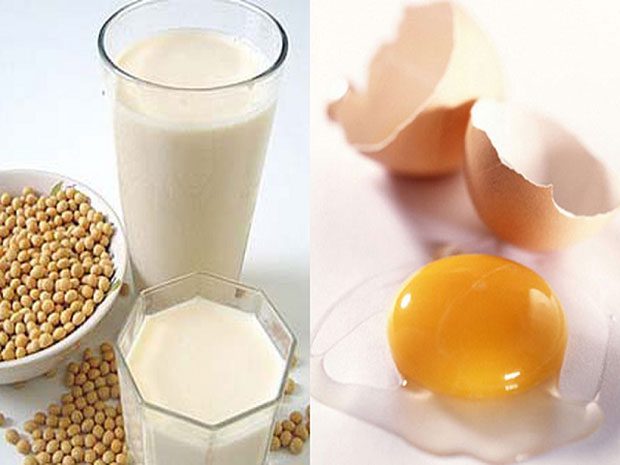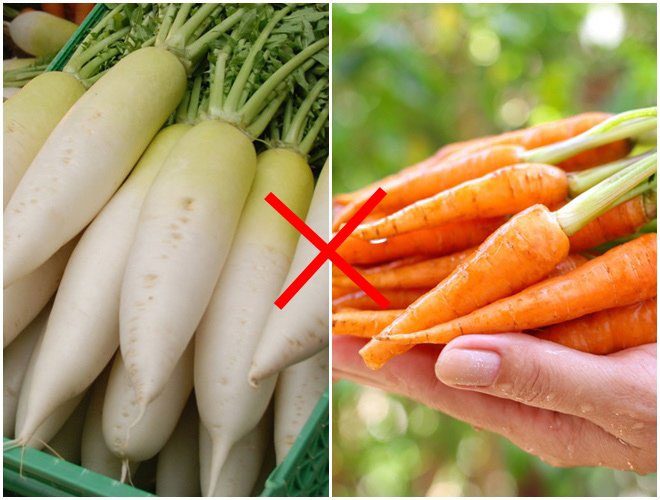Not everything that is eaten together is good; in fact, some combinations can lead to negative health reactions.
Each type of food carries essential nutrients that help boost immunity and promote stable bodily function. However, improper combinations can lead to bloating, diarrhea, or even serious poisoning.
Don’t focus solely on taste or presentation; pay attention to the ingredients you choose to combine for a balanced meal. In reality, some food items are highly incompatible and can cause adverse reactions in your body.
Cow’s Milk and Fruit Juice

Cow’s milk is a protein-rich food, with casein making up 80% of its content. When mixed with acidic fruit juices, this casein can coagulate, leading to indigestion and digestive disorders. Particularly, if consumed by young children over an extended period, it may result in methemoglobinemia (a blood disorder) that causes breathing difficulties and cyanosis, posing a risk of death. Acidic fruit juices can also alter the properties of cow’s milk, making it hard to digest.
Seafood and Ginseng

According to Traditional Medicine, seafood can promote rapid breathing, while ginseng is known to strengthen energy. These two can negate each other and harm the health of the consumer. Therefore, when using ginseng, it’s advisable to avoid all types of radishes and seafood, as they are incompatible.
Beef and Chestnuts

Chestnuts are rich in vitamin C, but when combined with beef, the nutritional value of the nuts decreases. Specifically, intentionally consuming them together can disrupt your digestive system, leading to indigestion and stomach discomfort.
Watermelon with Goat/Lamb Meat

After eating goat or lamb meat, having watermelon for dessert can harm the spleen and stomach. This is because goat meat is sweet and warming, while watermelon is cooling. Consuming them together not only diminishes the nutritional value of the goat meat but also causes issues in the stomach and spleen.
Chicken Eggs and Soy Milk

Soy milk is rich in protein and amino acids, particularly containing isoflavones which are beneficial for women’s health. While soy milk is good for the cardiovascular system and low in sugar, combining it with chicken eggs can cause albumin in the egg whites to react with trypsin in soy milk, producing substances that are hard for the body to absorb, leading to diarrhea and indigestion.
Carrots and Radishes

When preparing soups or stews, many families often cook radishes and carrots together for sweetness and appealing color. However, this combination is not nutritionally beneficial. Carrots contain enzymes that can destroy vitamin C, thus the vitamin C in radishes will be completely destroyed when eaten with carrots.
Beef and Shrimp
Many families have a habit of enjoying hot pot during the holidays, combining various ingredients, including beef and shrimp. However, this combination is not ideal because beef contains iron while shrimp is rich in calcium. Iron and calcium cannot be metabolized together, so cooking them together can reduce their nutritional benefits.
Beer, Alcohol with Energy Drinks, Soft Drinks, or Caffeinated Beverages
A common mistake many make is mixing alcoholic beverages with soft drinks to enhance flavor. This can lead to unforeseen consequences. Soft drinks or sodas, which contain high levels of CO2, expedite the absorption of alcohol into the bloodstream, affecting the nervous system significantly. This results in symptoms such as pain, fatigue, lethargy, confusion, and memory impairment. More seriously, this combination can cause blood vessels to dilate in the skin while constricting them in the organs, leading to sudden hypertension and various risks, including death.
Energy drinks, coffee, or stimulants all contain caffeine. They do not reduce blood alcohol levels but mislead consumers, making them unaware of their level of intoxication, prompting them to drink more. This can lead to sleep disturbances, increased risk of poisoning, and prolonged effects of alcohol.
Tea combined with Iron-Rich Foods

Red meat is a source of iron for the body. (Image: Independent).
The polyphenols and tannins found in tea, when combined with iron in foods such as red meat and organ meats, can make the absorption of both compounds more difficult. Specifically, the higher the levels of polyphenols and tannins in food, the more they inhibit the absorption of iron. Furthermore, a diet high in protein, especially iron, can reduce the antioxidant effects of green tea.
Therefore, it’s best to avoid drinking tea or using it alongside iron-rich foods. The best practice is to separate them by at least an hour. Groups at high risk of iron deficiency, such as women of childbearing age, infants, or young children, should take note.



















































